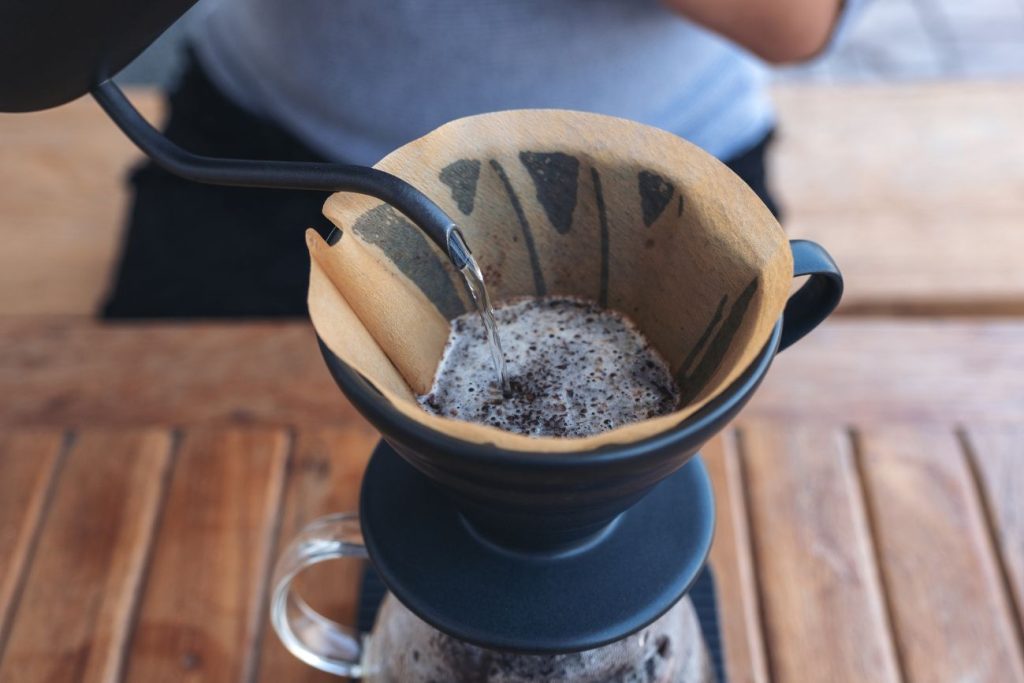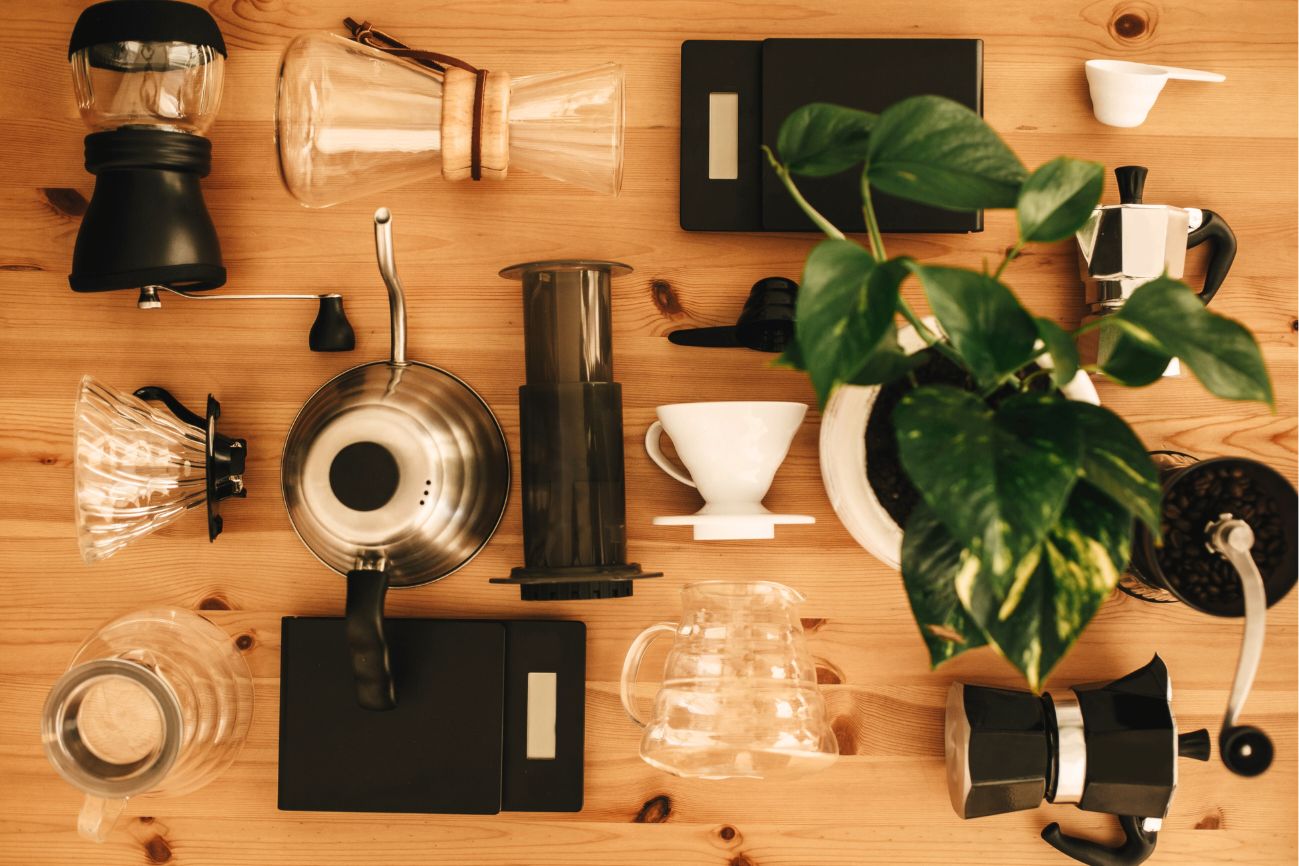If you hear the term acidity for the first time in coffee brewing and think it tastes like the tang of a juicy green apple or the zest of a ripe lemon, then you are right. It makes your coffee taste vibrant and lively.
You have come to the right place if you are beginning your coffee-making journey and would like to learn more about coffee acidity. This article will cover all you need to know about coffee acidity, including how it works, how to balance it for the perfect cup of coffee, how to control coffee acidity, acidity in coffee brewing, coffee acidity vs bitterness, low-acid coffee brewing tips, and much more.
Let’s move forward without wasting any more time.
Understanding Coffee Acidity
When I initially heard about coffee acidity, I thought it would taste like citrus and extremely tangy, but I was wrong. Coffee’s acidity provides a lively sensation and bright, fruity, floral, and wine-like flavors. It will give you crisp notes, similar to the tang of a juicy green apple or the zest of a ripe lemon, without being overly sour or tangy.
So, is it clear what it will taste like?
Coffee is naturally acidic. You can also check it by using the pH scale. Its pH level is between 4.8 and 5. It has 30 acids, including palmitic acid, citric acid, quinic acid, linoleic acid, phosphoric acid, malic acid, lactic acid, and chlorogenic acid.
Although coffee beans contain 30 natural acids, only nine remain when they are roasted and brewed.
These acids give your coffee a unique taste with floral and fruity notes.
These natural acids found in coffee beans all have unique qualities. For example, citric acid adds a bright, lemony, or lime-like aroma, while malic acid gives coffee a sweet, juicy feel. Chlorogenic acid is an antioxidant, whereas phosphoric acid adds a tangy, sparkling quality. Quinic acid provides coffee with its distinct flavor and aroma, whereas acetic acid may add malicious or fermented flavors.
Your coffee will taste bad if all of these acids are present in excessive amounts. Therefore, the most important factor is the amount of these acids. When these acids are present in the right amounts, your coffee will taste more like wine or in fruity flavors than vinegar.
How Cultivating Factors Affect Coffee Acidity?
Origin
The origin is the first factor affecting the acidity of coffee because the process of cultivating coffee is the beginning phase. We know that each region has unique soil types, weather patterns, and other characteristics. For example, if we consume rice from two different nations, it would taste slightly different from each of them. The acidity of coffee is the same. Ethiopian, Kenyan, and Central American coffee is acidic and frequently has floral and fruity flavors. Brazilian or Indonesian coffees, on the other hand, usually have earthier flavors and less acidity.
Altitude
Like the other factors, altitude and temperature also affect coffee acidity levels. As we know, the temperature is lower at higher places, and coffee cultivated at such altitudes grows more slowly and tends to mature more slowly. This allows for more nuanced flavors, such as bright and tangy notes, as well as becoming more acidic and floral. On the other hand, coffee grows less acidic in regions with higher temperatures, such as Brazil, at lower altitudes.
If we grow coffee at a balanced altitude, it won’t be too acidic or underly acidic.
Processing Method
Coffee is a cherry fruit, and the coffee bean is its seed. Some people think that coffee is only a bean. When we grow coffee cherries, we separate the beans from the cherries to get coffee beans. Here are the three methods that we use to do that.
- Washed (Wet) Process: In the washed process, we use water to wash cherries and to get the beans by removing the fruit. The fruit’s sweet components are removed during this process. As a result, the coffee tastes more acidic and sour.
- Natural (Dry) Process: When we dry cherry fruit naturally the coffee beans soak up the fruit’s sweetness, making it taste sweeter and less tangy.
- Honey Process: Here comes the perfect method to get balanced acidic coffee. We removed half of the fruit from the beans using the honey method, leaving the other half covering the beans. After that, we dry coffee beans which are covered with half of the cherry fruit. In this way, the coffee beans balance out the sweetness of the fruit, creating a perfect coffee with a touch of sweetness and moderate acidity.

Acidity in Coffee Brewing
Roasting Levels
After the cultivation process is completed, then we start the brewing process, which also impacts the acidity of coffee. Coffee roasting is the main factor because roasting coffee beans is the first brewing step after cultivation. We’ll talk about coffee acidity by roast levels.
- Light Roast: When we roast the beans at a lower temperature for just a small period then the natural acidic flavors and properties of beans almost remain the same. Light roasted beans are more acidic and have notes like citrus, green apple, or delicate florals.
- Medium Roast: With a medium roast, the coffee beans are less acidic than light-roasted beans but more acidic than dark-roasted beans because we roast them for a medium time period. The coffee flavors in the medium-roasted bean are similar to milk chocolate, toffee, or nuts. With this type of roast, you get the perfect balance of acidity and sweetness.
- Dark Roast: The coffee’s flavors are like dark chocolate, roasted nuts, or even a hint of spice in the dark roasted beans. Because we roast the beans for a long time at a high temperature, this reduces their acidic flavor and gives them a strong, smoky flavor. If you enjoy rich, smoky, and bold coffee, Dark Roasted Beans is a perfect option for you.
If you want to know more about Coffee roasting then you can also check out our post on “How to Choose the Right Coffee Roast: Light, Medium, or Dark?“
Coffee Grind Size
The second factor that affects acidity in coffee brewing is the grind size. When we use finely ground coffee grounds to make a cup of coffee, we get a more acidic coffee taste than when we use coarsely ground coffee beans. This is because when we use finely ground coffee beans, the water extracts all of their flavors, making the coffee more acidic.
Brewing Method
The third step is how you brew your coffee. This also affects the taste and acidity level of your coffee. When we brew coffee for a short period of time, it will be more acidic than the one we brew for a longer period of time. Also, a study shows that cold-brewed coffee is less acidic than hot-brewed coffee because in hot brewing, we use hot water, which releases all the acids from the coffee beans, making it more acidic.
Low Acid Coffee Brewing Tips
Everyone’s choice is different. Some people prefer a cup of coffee that isn’t very strong or acidic. If you enjoy a sweet, floral cup of coffee, you can follow these steps to make the perfect cup. Here we will share some tips to control coffee acidity and to get a perfect and balanced cup of coffee.
Choose the Right Beans
Selecting beans that align with your taste preferences is the first step. If you love bright and fruity flavors, opt for coffees from regions like Ethiopia or Kenya. If you prefer a milder acidity, look for beans from Brazil or Sumatra.
Adjust Grind Size
If you want less acidic coffee always choose coarsely ground coffee beans. If you choose to grind your coffee too fine, it may over-extract acids and cause sourness because it increases surface area.
Water Temperature
The coffee becomes highly acidic when we use hot water to brew it because the hot water extracts the coffee’s flavors and acids quickly. This also happens when we brew coffee at a higher temperature instead of a moderate level. Try cold brew coffee if you want less acidic coffee because it takes longer and is made at a lower temperature.
Brew Time
You might not realize it, but your brew time plays a significant role in determining coffee acidity. When you brew coffee for a shorter time, you allow less extraction, which can emphasize brighter, sharper acidic notes in your cup. If you extend your brew time, you extract more compounds, which can mellow the acidity and highlight sweetness and body instead. By adjusting your brew time, you can tailor the acidity level to match your taste. For example, if you feel the coffee is too tangy, you can try a slightly longer brew time to balance the flavor.
Consider Brew Methods
- Pour-over: Highlights clarity and acidity.
- French Press: Produces a fuller body with muted acidity.
- Espresso: Concentrates flavors, often enhancing perceived acidity.
Check out this video by Volcania coffee if you want to learn more about the low acide coffee too.
Coffee Acidity vs Bitterness
Most people think that the bitterness and acidity of coffee are the same. But, these two things are different. Let’s talk about the differences between these and how they affect the flavors of coffee.
Coffee Acidity
Coffee has strong natural acids, which makes it naturally acidic. The coffee tastes bright, tangy, or fruity when these acids are present, giving it a lively, fresh flavor. People usually associate these flavors with apples, berries, or citrus fruits. Lightly roasted coffee beans are acidic because their acids remain stable when we roast them at lower temperatures. Additionally, beans that are grown at higher altitudes have a higher acidity. Coffee acidity is about the nice, sharp nuances that give the flavor diversity, not about the acidity of lemon juice.
Coffee Bitterness
And when we roast the coffee beans at a higher temperature for a longer period of time, the bitterness develops. The taste of dark-roasted beans is harsh. If the coffee is over-roasted or over-extracted, it produces a strong, harsh flavor that can dominate other flavors. Dark-roasted beans have the strongest, boldest, and smoky flavors. However, if we roast them too much, the coffee would taste so awful that you won’t even want to drink it.
Why Coffee Acidity Matters
The coffee acidity matters the most because it balances the amount of sweetness and sourness. It offers you the perfect cup of coffee with all the fruity, lively, and fresh notes.
For example, a Kenyan coffee with high citric acidity might evoke the juiciness of an orange, while an Ethiopian coffee with floral acidity might remind you of jasmine tea. These vibrant notes are what set exceptional coffees apart.

Coffee Acidity Effects on Health
While coffee’s acidity adds flavor and freshness, it can also be problematic for some people. According to Daniel Preiato, RD, CSCS ( Registered dietitian and certified strength and conditioning specialist based out of Southampton, NY), Coffee acidity can cause heartburn, gastritis, and acid reflux. Since it has health benefits, some people may experience stomach issues. That’s why low-acid coffee is so important. You don’t need to worry if drinking highly acidic coffee is making you uncomfortable but you still want to drink it to increase your energy levels. You can brew the perfect low-acid coffee by following the instructions that we provided above.
The End Line
Coffee’s natural acidity adds to its delicious and fresh flavors. A well-balanced cup of coffee that has both sweetness and acidity can improve your day. However, if you have health concerns and dislike acidic coffee, you can simply follow the steps and instructions to make the ideal low-acid coffee. You only need to make a few little adjustments, including selecting the right coffee beans and brewing methods, rather than giving up coffee entirely.




